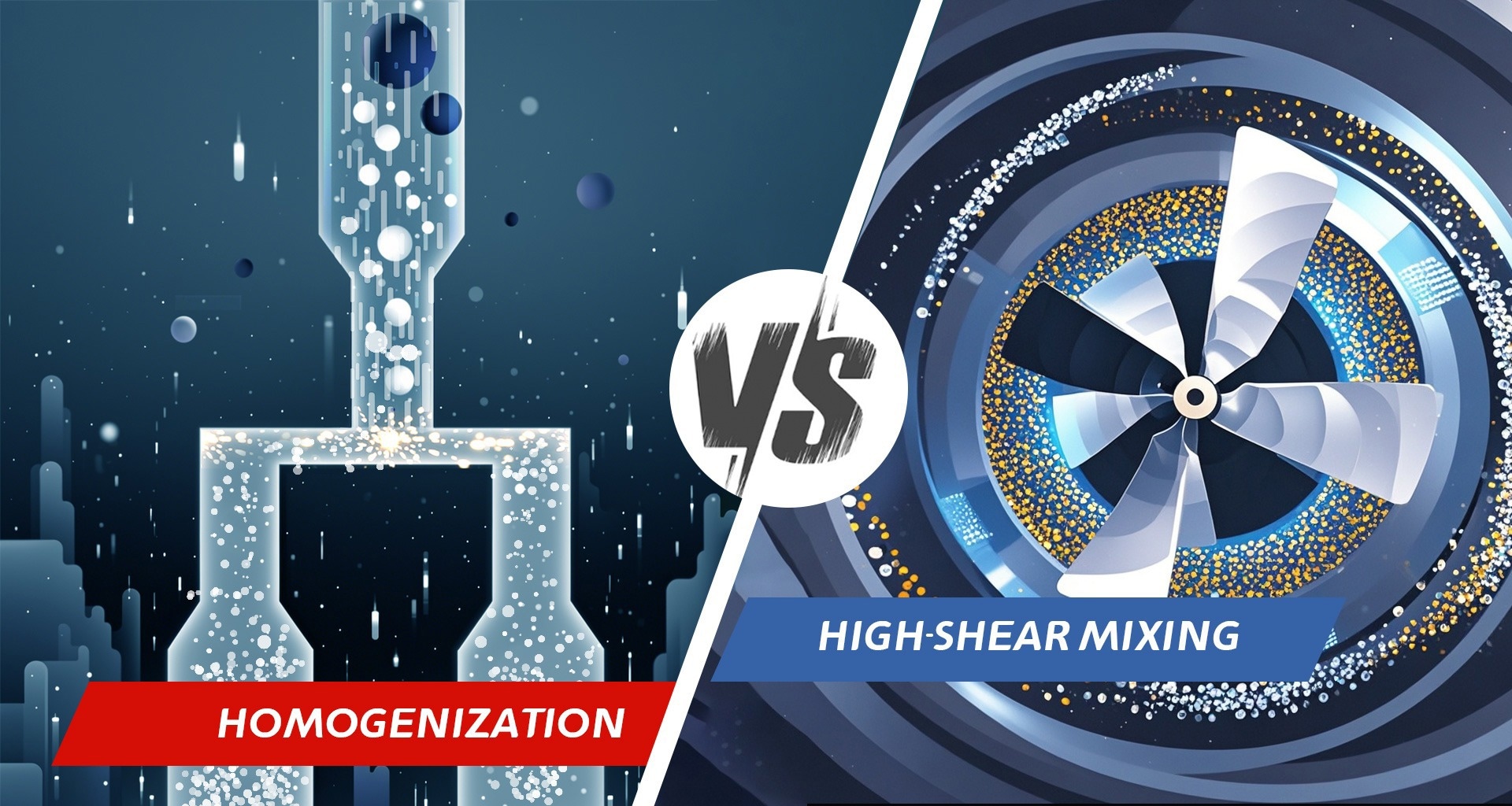Sponsored by Genizer LLCReviewed by Aimee MolineuxNov 12 2024
High-shear mixing and high-pressure homogenization are two approaches to particle size reduction, homogenization, and emulsification. Each method is principally based on shear force but offers distinct advantages depending on application.

Image Credit: Genizer LLC
Understanding Shear Force
Shear force is any force corresponding to a material’s surface. In liquid, for example, this leads to friction between fluid particles, leading to particle size reduction.
In high shear mixing, shear force is created using techniques like a rotor-stator or high-speed blades. In a rotor-stator, two pieces work mutually, with the stator stationary and sitting around a rotating rotor to produce shear force.
High-pressure homogenization generates shear by propelling the sample through a thin tube. A Y-shaped diamond interaction chamber can be used to split a liquid sample in two before colliding the sample with itself. The narrow section before collision generates shear.
Homogenization also creates additional forces, including cavitation and the impact of the samples colliding.
Advantages and Disadvantages of High Shear Mixing and High-Pressure Homogenization
High-shear mixing can accommodate more viscous samples and larger volumes than high-pressure homogenization, and it is generally more cost-effective. However, high-pressure homogenization has a narrower distribution and smaller particle size and is generally more precise.
High-shear mixing can accommodate a larger starting particle size, though high-pressure homogenization can achieve smaller ending particle sizes.
Some applications begin processing samples using high-shear mixing or sonication before ending with high-pressure homogenization. This approach can also reduce the starting particle size for high-pressure homogenization, reducing processing time.
High-pressure homogenization generally offers more rapid processing, with results typically being much more uniform as the entire sample is subjected to the same processing steps. High-shear mixing processes the sample differently, depending on the distance of each part from the rotor-stator or blades.
Acknowledgments
Produced from materials originally authored by Genizer LLC.

This information has been sourced, reviewed, and adapted from materials provided by Genizer LLC.
For more information on this source, please visit Genizer LLC.